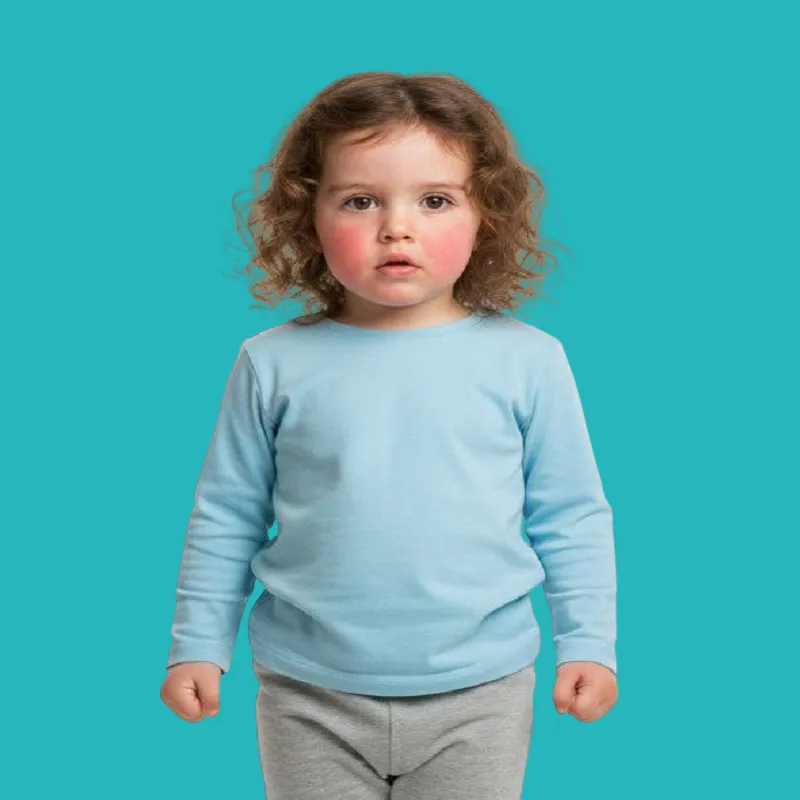Febrile seizures in children are brief episodes caused by a sudden rise in body temperature, most commonly occurring between six months and five years of age.
These seizures tend to be mild and temporary, but they require medical attention to rule out any other underlying cause of the fever.
What are febrile seizures in children?
Febrile seizures are episodes caused by a sudden rise in body temperature in children between six months and five years old. They are usually not dangerous but can be frightening for parents.
Causes of febrile seizures in children
These seizures can be caused by several factors, including:
- A rapid rise in temperature due to a viral infection.
- Ear or throat infections.
- Vaccinations that cause a temporary fever.
- A genetic predisposition in some children.
Symptoms of febrile seizures in children

A number of signs may accompany a febrile seizure in children, including:
- Temporary loss of consciousness.
- Shivering or shaking of the limbs.
- Muscle stiffness.
- Rapid or irregular breathing.
How do febrile seizures begin?
The seizure begins suddenly with the following symptoms:
- High fever minutes before the seizure starts.
- Sudden crying followed by lethargy and then shaking.
- The child loses responsiveness to their surroundings.
- It usually ends within one to three minutes.
How to Deal with Febrile Seizures in Children
To properly manage a seizure, follow these safe steps:
- Place the child on their side to prevent choking.
- Remove any solid objects from around them.
- Remain calm and do not try to stop the seizure by force.
- Carefully monitor the duration of the seizure.
What to Avoid During a Seizure?
There are some things you should absolutely avoid, such as:
- Do not put anything in the child's mouth.
- Do not try to give them medication during a seizure.
- Do not shake the child or try to forcibly revive them.
- Do not use cold water directly.
Treatment for Febrile Seizures in Children
Treatment for febrile seizures in children begins with taking immediate steps when a seizure occurs, such as:
- Place the child on their side.
- Remove any objects from around them.
- Reduce fever with lukewarm compresses.
- Administer an appropriate fever reducer.
- Monitor the duration of the seizure.
- Consult a doctor if it recurs.
How to treat fever after febrile seizures

After the seizure ends, the fever should be gradually reduced by:
- Administering an age-appropriate fever reducer.
- Applying lukewarm compresses to the armpits and groin.
- Providing fluids to combat dehydration.
- Monitoring the child's temperature every few hours.
When should you see a doctor?
There are situations that require immediate medical evaluation, such as:
- A seizure lasting more than 5 minutes.
- A recurrence of the seizure within the same day.
- Difficulty breathing or bluish lips.
- The child does not regain consciousness within minutes of the seizure ending.
Ways to prevent febrile seizures
The likelihood of seizures can be reduced by following these simple guidelines:
- Treat any fever immediately.
- Monitor the child after vaccinations that cause fever.
- Give fluids regularly.
- Do not delay seeing a doctor in cases of high fever.
Frequently Asked Questions
Are febrile seizures dangerous in children?
They are usually not serious, but they require medical follow-up to rule out other underlying causes.
Can febrile seizures recur?
Yes, they may recur in some children up to the age of 5.
Do febrile seizures in children affect a child's intelligence?
No, mild febrile seizures do not affect mental development.
Can febrile seizures in children be completely prevented?
They cannot be completely prevented, but quickly controlling the fever reduces the chances of them occurring.
Article Summary
Febrile seizures in children are a reaction of the child's body to a high or sudden rise in temperature. They are usually mild and resolve within minutes without harm.
Responding calmly and correctly during a seizure, then reducing the fever and monitoring the child, ensures a safe outcome. However, it is essential to consult a doctor if the seizure recurs or if any worrying signs appear.